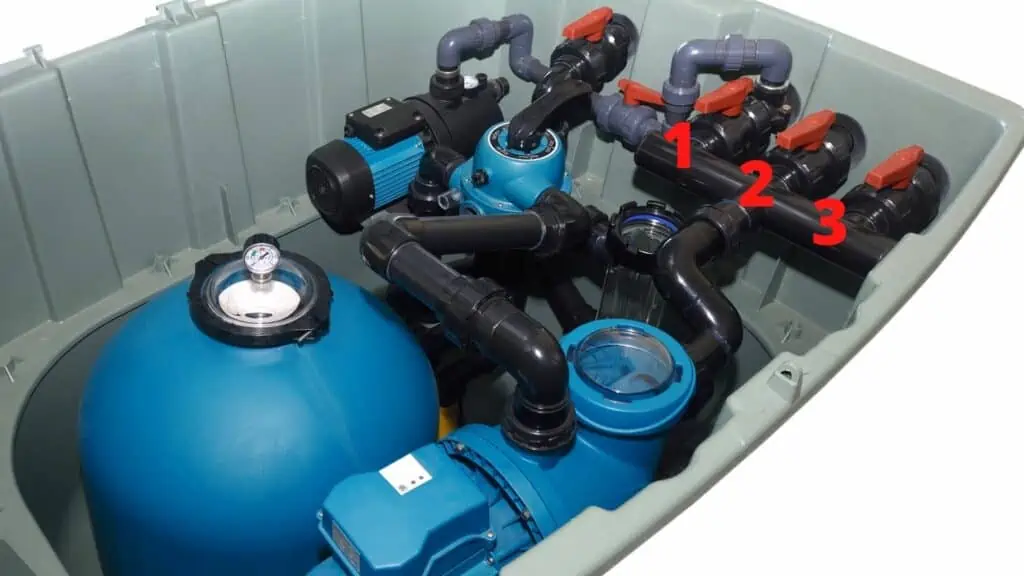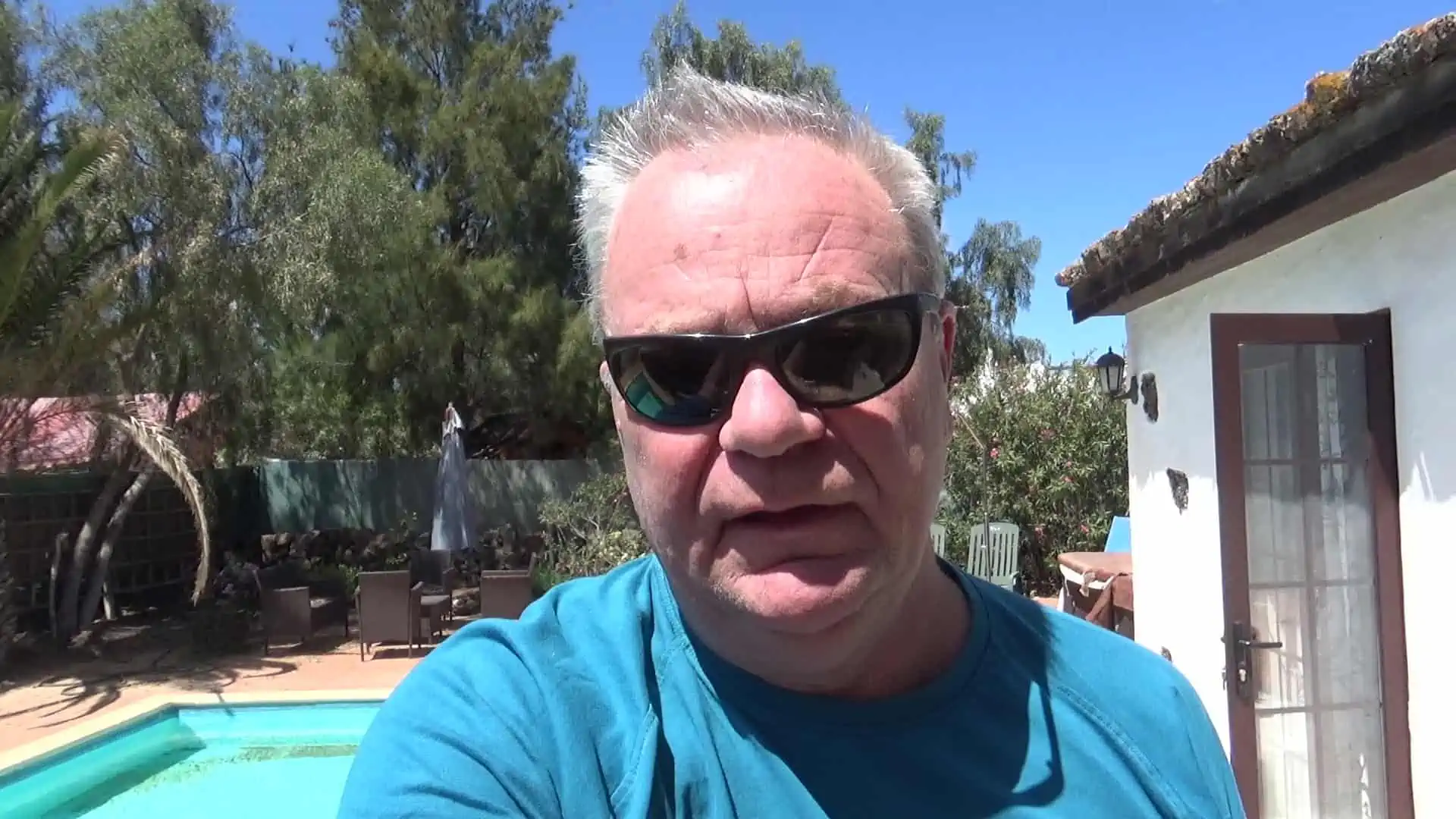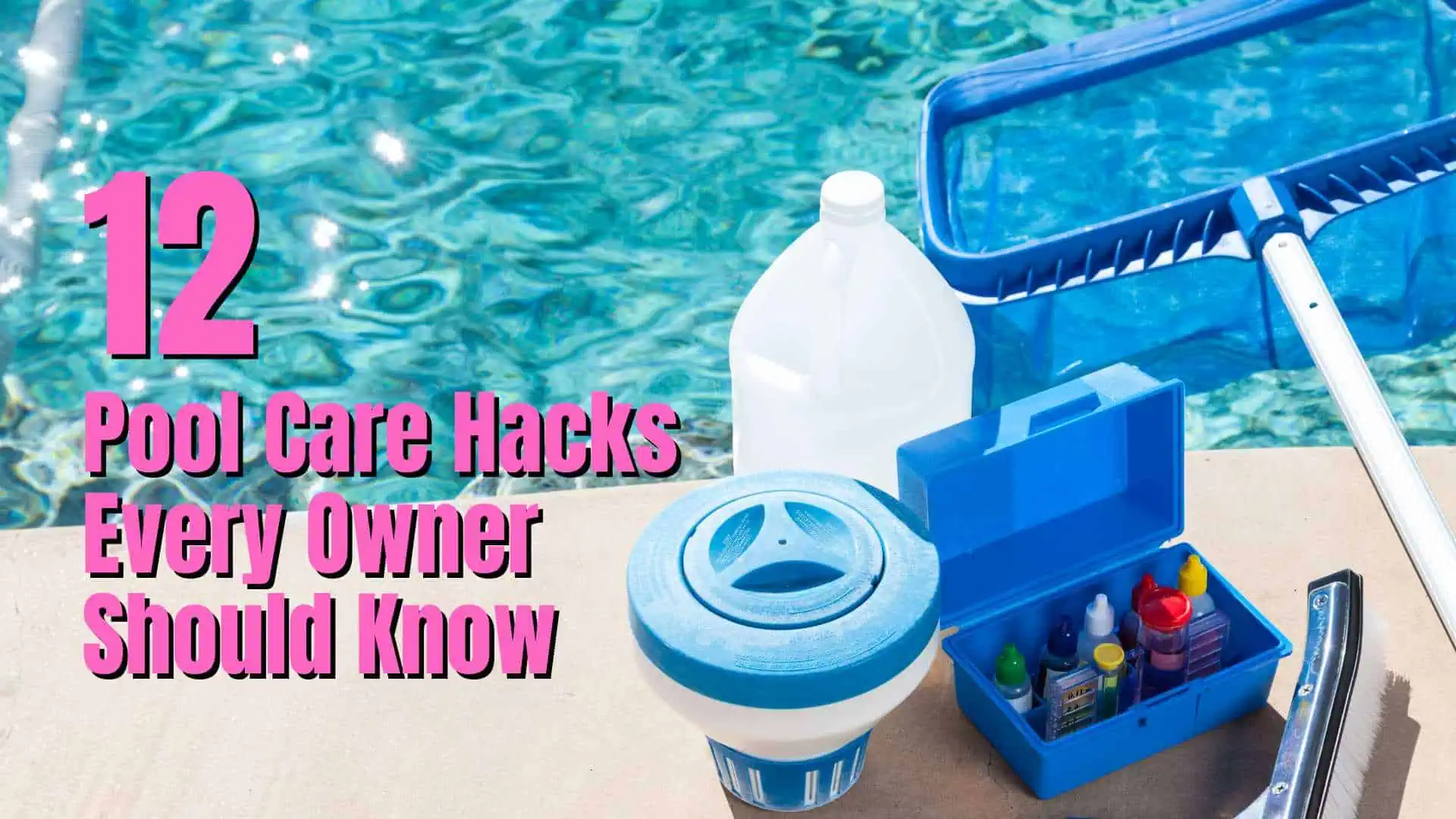Is it better to keep your pool’s main drain open or closed? This is a common question among pool owners, especially those new to in-ground pool maintenance.
Understanding the function and management of your pool’s main drain is crucial for effective pool care.
Typically, the pool main drain should be open during the swimming season and closed during winter. However, there are instances, like when vacuuming your pool, where partially closing the main drain can be beneficial to redirect more suction to the skimmers.
Well, we’ll be going over:
- What is the role of the pool main drain in your swimming pool’s plumbing system?
- How do you determine if your pool’s main drain should be open or closed during different maintenance activities?
- What are the specific scenarios where adjusting the main drain settings can optimize your pool’s cleaning and maintenance?
Let’s explore these aspects to ensure you can effectively manage your pool’s main drain for a clean and well-maintained swimming environment.

Key Takeaways
- Keep the main drain open for regular pool maintenance.
- Adjust valve settings based on specific cleaning tasks or seasonal changes.
- Regularly check and maintain all valves for optimal pool health.
Pool main drain open or closed?
Generally, a pool’s main drain should be open throughout the swimming season for efficient water circulation and filtration. Here are key points to consider:
- Main Drain Function: It draws water from the pool bottom, aiding in filtration and cleanliness.
- Valve Positioning: The main drain valve should be open during normal operation. This helps in balancing water flow between the drain and skimmers.
- Vacuuming: For more suction while vacuuming via a skimmer, partially close the main drain.
- Winterizing: During winter closure, the main drain may be closed to protect the plumbing.
- Adjustment for Skimmers: Partially closing the main drain can enhance skimmer performance if needed.
What is a pool main drain?
The main drain in a swimming pool is located at the bottom (the lowest point).
During normal operation, it draws water from the bottom of the pool to be passed through the filtration system as part of the daily cleaning cycle.
It can also be combined with the pool pump to empty the pool if necessary.
Another function of the main drain is that it is linked via a pipe to one of the pool skimmers in many pool setups. If the pool water level drops below the bottom of the skimmer opening a diverter valve in the skimmer operates and pool water is pulled from the main drain pipe so that the pump doesn’t run dry and become damaged.
See my post Why are there two holes at the bottom of a pool skimmer for more information.
Where is the pool main drain valve?
The pool main drain valve will be in the pipework on the suction side of your pool pump.
To find which it is, follow the pipework from the pump backward. You will probably come to a junction where two, three or more pipes join into one before going to the pump. If you follow these pipes backward, each should have a valve (probably a ball valve). One of these will be the valve that controls the main drain.
Where you have three, it is common practice for the main drain’s valve to be the center port. The others would be from each of the skimmers. If you have a built-in spa, you are likely to have one for this, too.
If you have two with the pump running, close one and leave the other open to find the main drain valve. Then look in your skimmer/s and see if water is being drawn into them. If you can still see water flow into the pool skimmers, the open valve controls the skimmers, and the closed valve is the main drain (and vice versa).
Ask your builder to label each valve if the pool is being built. A good pool builder should do this as a matter of course.
In a few cases, in some pools, there may be just one diverter valve that controls where the suction comes from, which is turned either toward the skimmer/s or the main pool drain.

How do I know if my main drain is open or closed?
Once you find the pool drain valve (see above if you are unsure which it is), you can see if the pool main drain valve is open or closed. The valve will be open when the valve handle runs in the same direction as the pipe and closed at 90º to the pipe.
Skimmer and main drain pool valves open or closed?
Under normal circumstances, the skimmer and the main drain diverter valves should be open. This means the pool water flow will be into both when the filtering system runs.
That way, the skimmer/s will pull in any debris floating on the pool surface, and the main drain will also pull water in from the bottom. So, with water flowing into both skimmers and the main drain, good circulation should be created, ensuring all pool water is filtered over time.
Leave pool main drain valve open or closed?
There are two reasons why you may want the main drain closed:
- If you vacuum the pool via a skimmer and want maximum suction, closing the main drain valve will divert more suction to the skimmer/s. See my post How to vacuum a pool
- When you close your pool for the winter months (assuming you live in a climate that is cold enough to need to close the pool) then it would normally be best practice to have the main drain fully closed.
When should the main drain be partly open?
If your skimmers have insufficient water flow to pull in debris floating on the pool’s surface adequately, you can partially close the valve to the main drain until the water flows into the skimmers with sufficient force.
If the valve is partially open and at 45º to the pipe, this will mean that there is now just 50% water flowing from the main drain.
Pool Care Handbook and Video Course
When I bought my house with a swimming pool, I knew absolutely nothing about pool care. I just winged it for a while, making many mistakes along the way.
Fortunately, I was recommended Swim University’s Pool Care Handbook and Video Course. I bought it and it was an absolute game-changer.
It was the best money I spent that year. I learned everything from basic cleaning to advanced troubleshooting. Swim University offers a no-quibble refund policy too so what do you have to lose?
How to empty a pool using the main drain
To drain the pool, you should follow the following procedure:
- Adjust the pool valves.
Close the valve/s that control suction from the skimmers and open the valve that controls the suction from the main drain at the bottom of the pool.
If you didn’t do this and left the skimmer valve open, once the level in the pool reached the bottom of the skimmer’s opening, the air would be drawn into the system (possibly damaging your pump), and no further water would be expelled from the pool. - Adjust the multiport valve.
Turn the multiport valve of the pool filter to the “waste” position. This will make the water flow out of the system into your sewage system or yard, depending on your particular setup.
If you were to leave the multiport valve in the “filter” position, you wouldn’t drain water out of the pool as it would just be pumped straight back into the pool. The same would be true with the lever in the “recirculate” position. See my post, the Pool Filter Settings Explained. - Run out backwash hose.
Depending on whether your pool is set up to drain into the sewerage system or your yard, you may need to run a backwash hose (if you have one) into your yard to wherever you want the water to drain. - Run the pool’s pump.
Now switch on the pool’s pump and run it until it is empty. Make sure you monitor this so that the pump does not run dry.
You can also use this method to drain your pool below the level of the skimmer or after heavy rain.
NOTE: If you have a fiberglass pool liner, then expert advice should be sought by the pool owner before emptying the pool, as it is possible to damage the liner by emptying it.

I have had hot tubs for over 20 years and a pool for the last 10 years. I had to learn how to clean, maintain and fix them the hard way. Since then I have helped many friends and neighbors with their pools and now I want to share everything I have learned with you. About Me




